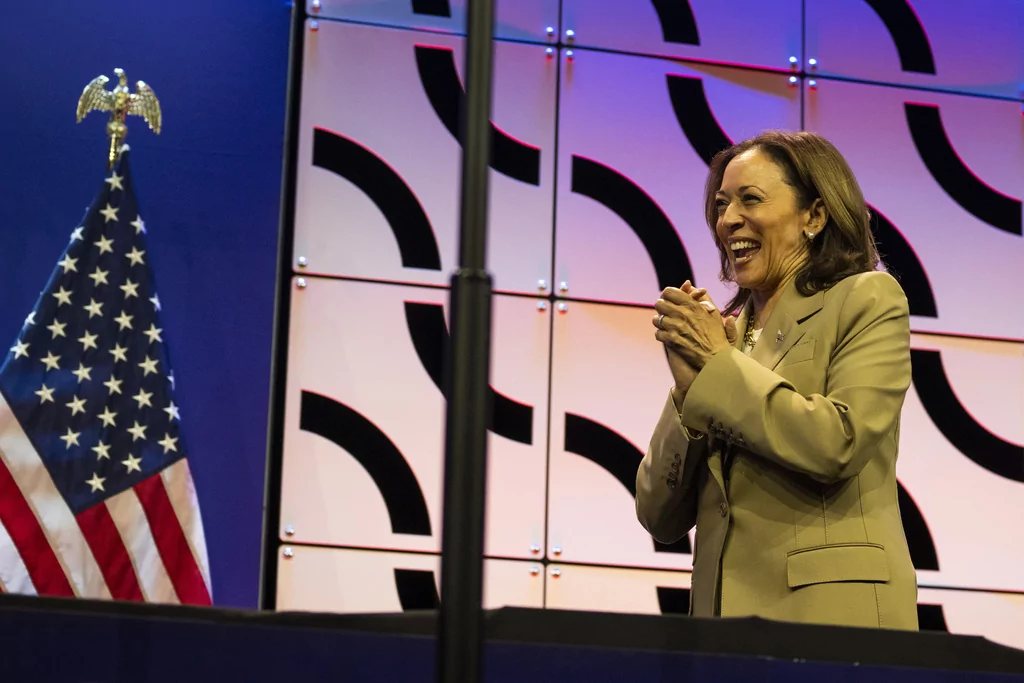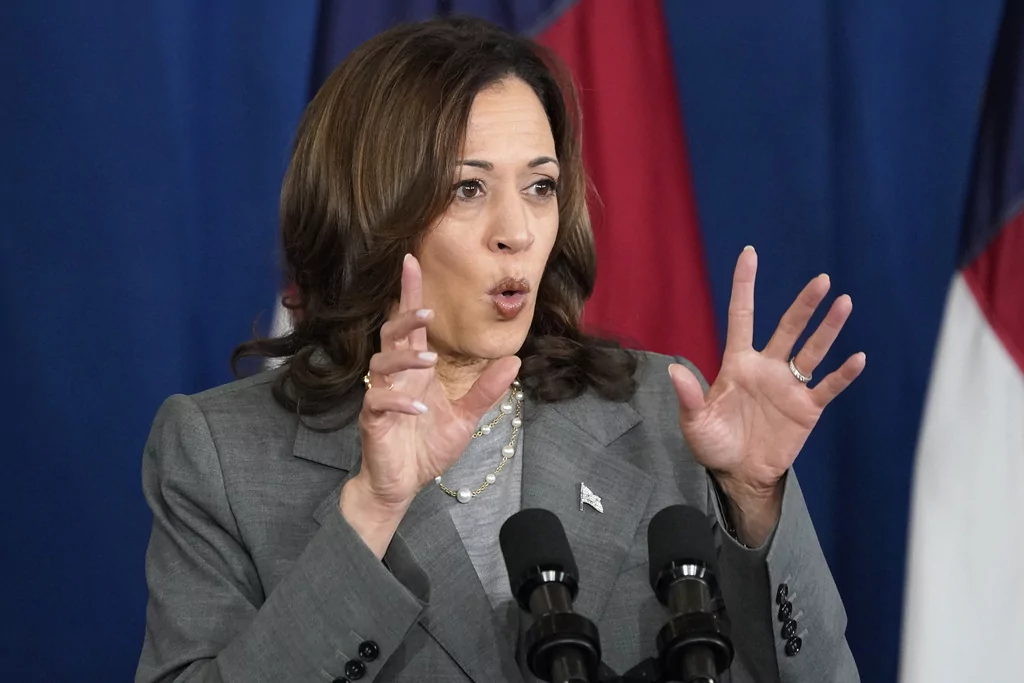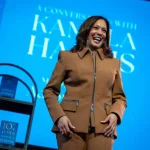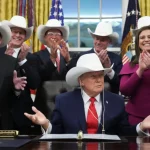
As calls loom for President Joe Biden to step aside ahead of the Democratic National Convention, there are many uncertain questions about how Vice President Kamala Harris would fare in a general election.
Harris’s 2019 campaign against candidate Biden and a crowded Democratic field ended within 10 months, well before the Iowa caucuses, after a string of poor leadership, cash flow, and connection problems.
Harris has disavowed the internal push for her to take over the 2024 campaign, but her vice presidency has given her a prime position to widen her reach both with voters and party insiders to make her next attempt more successful.
Prominent Democrats pushing for Biden to exit the race, including former House Speaker Nancy Pelosi, cite that Harris is a strong candidate to beat former President Donald Trump, but fear that naming her outright at the convention next month would turn off key voters in November.
Even with this tacit support from party elites, the question remains whether a Harris campaign can imagine what could be, unburdened by what has been.
Here are the strengths and weaknesses of a Harris campaign.
Authenticity
Harris has always struggled on the national stage with likeability, but being out front on several issues on the campaign trail for Biden has given her a chance to rectify this weakness.
Harris has visited Michigan, a key swing state, four times in 2024 and seven times since taking the Vice Presidency. She has also visited the purple state of Pennsylvania six times this year, making 16 separate trips to the Keystone State since taking office in 2021. Whereas in 2020, she needed to spend time establishing a national presence, now she has one solidified and relationships built.
On the campaign trail, she has also visited North Carolina and Arizona several times this year amid contentious debates on abortion.
Yet, Harris’s speaking foibles and recycled idioms have garnered as much attention as Biden’s during his tenure as vice president. Her laugh has also been the target of critique, even for those supporting her policy positions.
Some commentators noticed in 2019 that Harris’s mixed-race background may contribute to her public image problem.
Harris’s shared black and Indian American identity and her so-called “San Francisco values” were assets in her California races but may have set her behind in a national election.
Indeed, although Harris was thought to be the heir to former President Barack Obama’s legacy as the first black president, Harris failed to gain the support of black voters during the 2020 primary season, with Biden receiving most of the appreciation from the black community.

Campaign Structure
Harris may be able to overcome some of these lofty image problems with a fresh cast of characters around her now, compared to her inner circle she worked with in 2019.
Campaign strategist Juan Rodriguez, who started off in school board elections in 2003, was Harris’s leading man during her Senate race in 2016 and had a starring role in her first presidential campaign.
More than 50 former members of the Harris 2019 campaign told the New York Times in 2020 that leadership under Rodriguez and Harris was chaotic, with staff split into factions competing against one another more ardently than against Democrat challengers.
At the time, then Rep. Marcia Fudge (D-OH) and Chairwoman of the Congressional Black Caucus said Harris was an exceptional candidate, but Rodriguez served her poorly and should be fired.
Since ascending to the Vice Presidency, Harris has surrounded herself with other advisors, including Lorraine Voles, who was communications director for former Vice Pres. Al Gore and former Sen. Hillary Clinton.
Biden “Brawler-in-Chief” Anita Dunn has also been working closely with Harris since June 2023 to rebrand the Vice President’s image ahead of the Biden-Harris campaign.
Dunn is one of Biden’s closest political strategists and was the brainchild of the phrase “Dark Brandon,” making her a critical player in the meme wars taking over politics for younger voters.
Issues
Biden’s advisers gave Harris a competitive advantage by making her the face of the Administration’s push for abortion rights following the Supreme Court’s overturning of Roe v. Wade.
Harris has been the main voice on reproductive health topics, including abortion, contraception, and IVF, in the lead up to the November election, giving her both an edge on a policy issue and more face time with the public.
Following the debate between Trump and Biden, CNN’s Anderson Cooper gave Harris a platform to communicate with voters about the role of abortion rights in the next election, signaling that abortion is her strongest issue.
Harris’s messaging on abortion has also helped her in her polling rankings with women, with 50% of female voters supporting Harris over Trump in a head-to-head contest. Nearly 80% of black female voters also support Harris.
But Harris may struggle to connect with the base on other issues, including other aspects of healthcare.
Part of Harris’s undoing on the issues in 2019 was also the sharp criticism of her Medicare-for-All plan from fellow Democrats.
Unlike a full single-payer system supported by strong progressives like Sen. Bernie Sanders (I-VT), Harris’s so-called Kamalacare allowed some room for a private insurance market, which proved unpopular with the base.
Harris also struggled with quantifying the cost of the sprawling healthcare overhaul. The implementation of the plan also would have taken over a decade, well beyond if she had two successful terms.

Cash flow
Harris suspended her campaign well before any of the other candidates in the primary due largely to a lack of campaign funds.
“I’m not a billionaire,” Harris stated in a Medium post in early December 2019. “I can’t fund my own campaign. And as the campaign has gone on, it’s become harder and harder to raise the money we need to compete.”
But those cash flow problems from 2019 seem to have evaporated as major Democratic donors urge for Harris to take the helm.
As many as 75 Democratic donors reportedly gathered over Zoom earlier this month to discuss a pathway forward following Biden’s poor debate performance against Trump.
Harris also reportedly spoke with donors on Friday, according to a Biden campaign official, but her role on the call was to encourage them to continue to support the sitting president for re-election.
New Challenges
Although Harris had to defend her record as California Attorney General and Senator five years ago, she now must also face the new challenge of contending with her record as Vice President.
Harris greatly fumbled with her role as the so-called “border czar,” a moniker given after Biden handed her the responsibility of dealing with immigration issues.
The Vice President was widely criticized following an interview in 2021 with Lester Holt, saying she would go to the border “at some point.” Harris later defended her lack of a border visit by saying she had not ever been to Europe.
CLICK HERE TO READ MORE FROM THE WASHINGTON EXAMINER
With about 57% of Republicans saying immigration is the No. 1 problem facing the nation, her legacy as border czar would likely become a highlight of Trump campaign criticism should she rise to the top of the ticket.
Harris would also need to address the degree to which she and others in Biden’s inner circle have hidden his cognitive decline that ultimately may prove to be her opening for the presidency.







